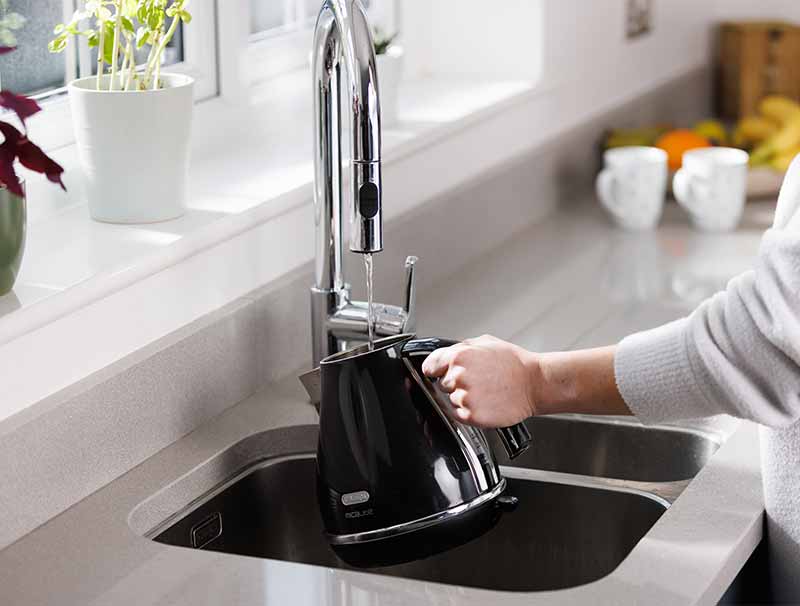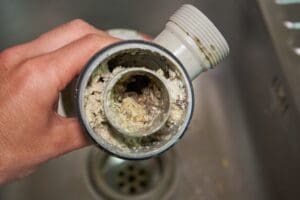The author is making several good annotation related to 4 Ways to Troubleshoot Low Water Pressure overall in the article underneath.

Low water stress in your home can be a frustrating issue, affecting whatever from bathing to washing meals. If you're experiencing weak water circulation, there are a number of possible causes and options to check out. In this overview, we'll review typical reasons for low water stress and useful actions to deal with the issue effectively.
Introduction to Low Tide Stress
Low tide pressure occurs when the flow of water from your taps, showers, and other components is weaker than typical. This can make day-to-day jobs more tough and less efficient. Understanding the sources of low water pressure is vital to discovering the ideal service.
Typical Reasons For Low Water Stress
Pipeline Obstructions
Gradually, pipes can become obstructed with natural resource, sediment, or particles, restricting the flow of water. This is an usual problem in older homes with galvanized steel pipes.
Corrosion
Corrosion within pipelines can cause leakages and decreased water stress. Rust buildup can restrict water flow, specifically in aging plumbing systems.
Faulty Stress Regulators
Stress regulators are accountable for preserving consistent water pressure in your home. If they malfunction, it can result in low tide pressure or irregular circulation throughout your house.
Metropolitan Water Supply Issues
Often, the issue exists outside your home. Local water system issues, such as main line leakages or upkeep job, can momentarily decrease water stress in your location.
Exactly How to Diagnose Low Water Stress
Inspecting Taps and Fixtures
Begin by examining the water stress at different taps and fixtures throughout your home. If the problem is isolated to details areas, it may show local problems.
Inspecting Pipes
Check noticeable pipelines for indications of leakages, corrosion, or clogs. Take notice of any kind of uncommon audios, such as knocking or rattling pipes, which could suggest problems within the plumbing system.
Consulting with a Plumber
If you're unable to determine the root cause of low water stress, consider hiring a specialist plumber to conduct a comprehensive inspection. They can determine underlying concerns and suggest suitable options.
Do It Yourself Solutions to Fix Low Tide Pressure
Cleaning Up Aerators and Showerheads
Mineral deposits can gather in aerators and showerheads, minimizing water circulation. Get rid of and clean up these elements regularly to improve water stress.
Flushing Water Heater
Sediment build-up in the water heater can restrict flow and reduce efficiency. Purging the container regularly aids get rid of sediment and maintain ideal performance.
Inspecting Stress Regulatory Authority
Make certain that the stress regulator is functioning correctly. Changing or replacing the regulatory authority can assist bring back correct water stress throughout your home.
Cleaning Clogs in Water Lines
For small obstructions, attempt utilizing a plumbing snake or chemical drainpipe cleaner to clear obstructions in pipelines. Be cautious when using chemicals and adhere to safety guidelines.
When to Call a Specialist Plumber
If DIY initiatives fall short to solve the issue or if you suspect significant plumbing issues, it's finest to seek aid from a qualified plumber. They have the proficiency and tools to address complex issues securely and successfully.
Preventive Measures to Keep Water Stress
Normal Upkeep
Arrange regular upkeep for your plumbing system to prevent problems such as corrosion, leakages, and clogs. Resolving small problems early can aid avoid more considerable repairs later on.
Installing a Stress Booster
Consider mounting a pressure booster pump to improve water pressure in locations with consistently reduced circulation. This can be especially advantageous for multi-story homes or properties with high-demand components.
Surveillance Water Use
Bear in mind water usage behaviors and avoid ill-using the plumbing system. Simple modifications, such as staggering showers and laundry tons, can assist maintain sufficient water pressure.
Final thought
Taking care of low tide pressure can be irritating, but identifying the underlying causes and implementing suitable services can recover optimal flow throughout your home. Whether it's cleansing aerators, checking pipelines, or consulting with a plumber, taking proactive actions can make sure a stable supply of water for your daily requirements.
FOUR WAYS TO FIX LOW WATER PRESSURE NOW
Turning on a shower or faucet only to find the water comes out in a sad, slow drizzle is never a good feeling. How exactly are you supposed to wash a pan or take a quick shower when it takes 10 minutes just to rinse off a little soap? The good news is that when your water pressure is bad, there's always a cause: typically one that can be easily fixed. Here are some of the most common causes of low pressure and what you can do to fix the issue:
DEBRIS AND MINERAL DEPOSIT BUILDUPS
If you notice low water pressure from just one or two of the fixtures in your house, the problem likely has to do with debris buildup. Water is full of minerals and other debris, all of which can accumulate in your pipes and on your fixtures. This can cause a blockage that affects how much water flows through. To fix this, try filling a small plastic bag with white vinegar, and use a rubber band to hang it around your showerhead or faucet. Let the head of the fixture soak for a few hours, and the vinegar should loosen the deposits.
WATER LEAKS
Leaks are another common cause of low water pressure. If water is flowing out of your plumbing through a hole or crack before it can reach your fixture, the pressure coming out of the faucet or showerhead will be lower. A plumbing professional is your best bet for finding and repairing a leak in your water supply pipes.
Leaks are another common cause of low water pressure. If water is flowing out of your plumbing through a hole or crack before it can reach your fixture, the pressure coming out of the faucet or showerhead will be lower. A plumbing professional is your best bet for finding and repairing a leak in your water supply pipes.
FOUR WAYS TO FIX LOW WATER PRESSURE NOW
Turning on a shower or faucet only to find the water comes out in a sad, slow drizzle is never a good feeling. How exactly are you supposed to wash a pan or take a quick shower when it takes 10 minutes just to rinse off a little soap? The good news is that when your water pressure is bad, there's always a cause: typically one that can be easily fixed. Here are some of the most common causes of low pressure and what you can do to fix the issue:
DEBRIS AND MINERAL DEPOSIT BUILDUPS
If you notice low water pressure from just one or two of the fixtures in your house, the problem likely has to do with debris buildup. Water is full of minerals and other debris, all of which can accumulate in your pipes and on your fixtures. This can cause a blockage that affects how much water flows through. To fix this, try filling a small plastic bag with white vinegar, and use a rubber band to hang it around your showerhead or faucet. Let the head of the fixture soak for a few hours, and the vinegar should loosen the deposits.
WATER LEAKS
Leaks are another common cause of low water pressure. If water is flowing out of your plumbing through a hole or crack before it can reach your fixture, the pressure coming out of the faucet or showerhead will be lower. A plumbing professional is your best bet for finding and repairing a leak in your water supply pipes.
Leaks are another common cause of low water pressure. If water is flowing out of your plumbing through a hole or crack before it can reach your fixture, the pressure coming out of the faucet or showerhead will be lower. A plumbing professional is your best bet for finding and repairing a leak in your water supply pipes.
A VALVE ISSUE
If you have low water pressure throughout your home, check your main shut-off valve to make sure it's completely open. You may also want to see if there's a pressure-reducing valve installed. If there is, have a plumber help you adjust the settings to get the pressure you're looking for.
OTHERS USING WATER
Believe it or not, your low water pressure could be caused by your neighbors. If you notice low pressure at certain times of day, it may be because you and the people living next to you have similar schedules - when everyone is showering at the same time, the pressure will be lower in every home. Low pressure throughout the neighborhood may also be caused by an issue with your municipal water supply. If that's the case, call the supplier to see if they're working on the issue.
https://www.rotorooter.com/blog/water-leaking/low-water-pressure-fixes/

As an enthusiastic reader about 9 Reasons for Low Water Pressure in Your House, I was thinking sharing that information was essential. So long as you appreciated our blog post if you please make sure you remember to share it. We love reading our article about Low Water Pressure in the House?.
Click Here